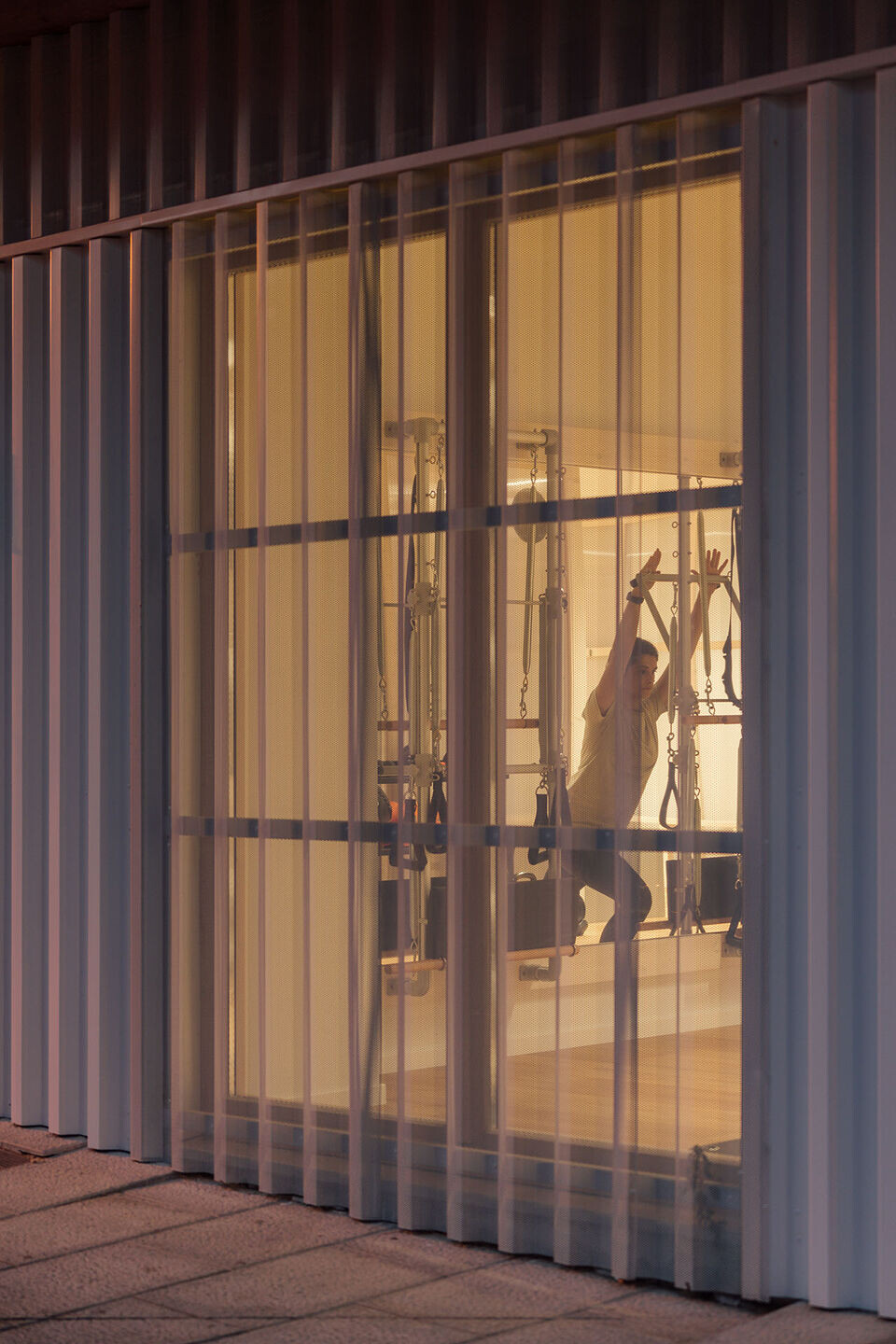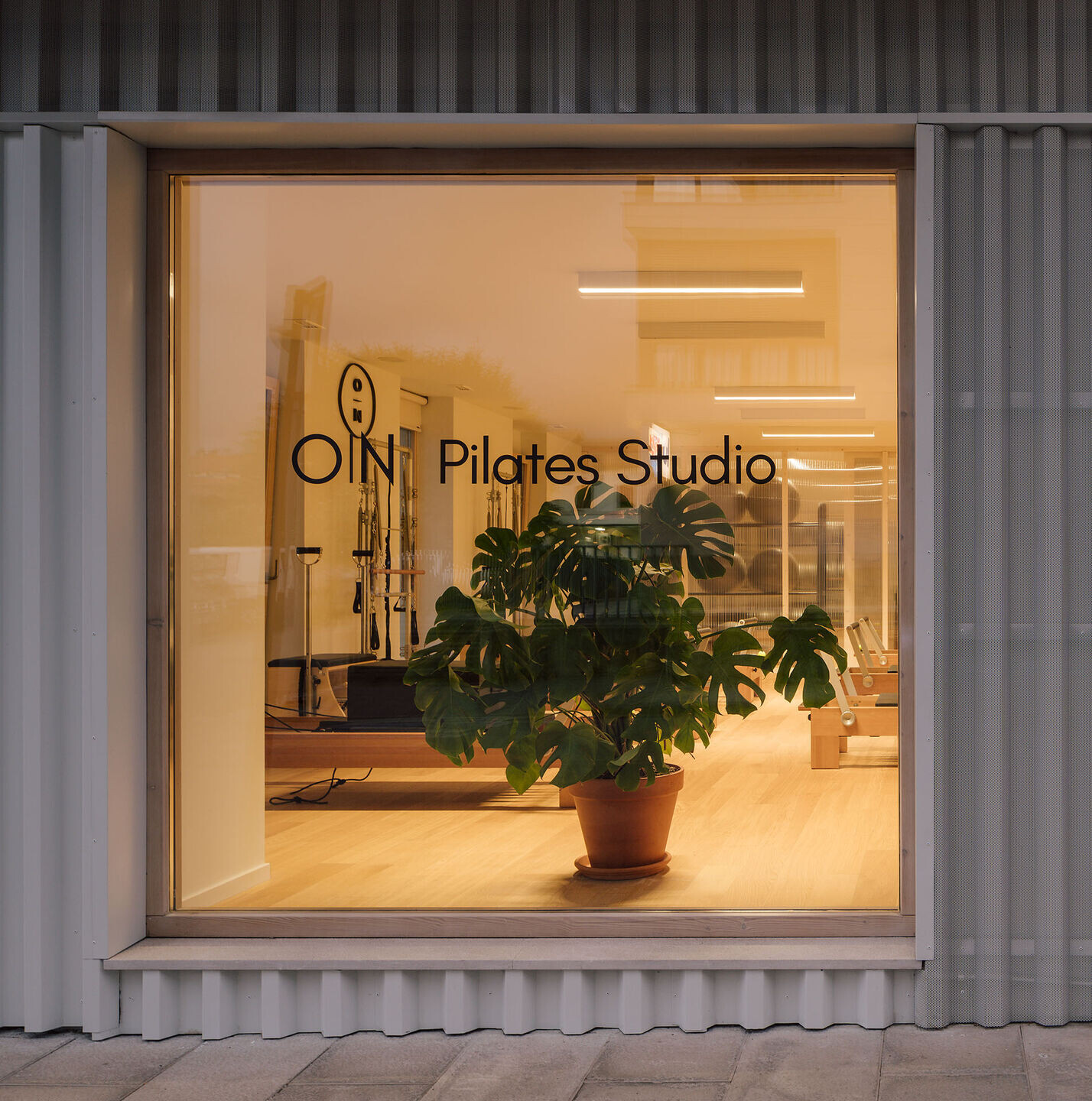On Pilates Clinic is a project that was born after the COVID-19 lockdown, which involved deep reflection about what creates a safe space and the decisions made to achieve this. Natural light and ventilation were essential to introduce into a place dedicated to training, health and well-being, and so wide spaces connected to the outside were implemented. In addition, modern construction technology was integrated into the design to guarantee optimal air quality when natural ventilation is not possible.


The project is located on the ground floor of a residential building with various constraints: an irregular grid of pillars, multiple downspouts and an urban context from which the studio needed to be isolated. The project strategy is based on regularizing the space. To do this, the holes in the facade and the joints of the interior partitions correspond, generating axes and alternations in which reformers, towers, as well as lights and other ceiling equipment are integrated. The furniture was also designed for maximum integration with the studio and it was located to define specific uses for the space.
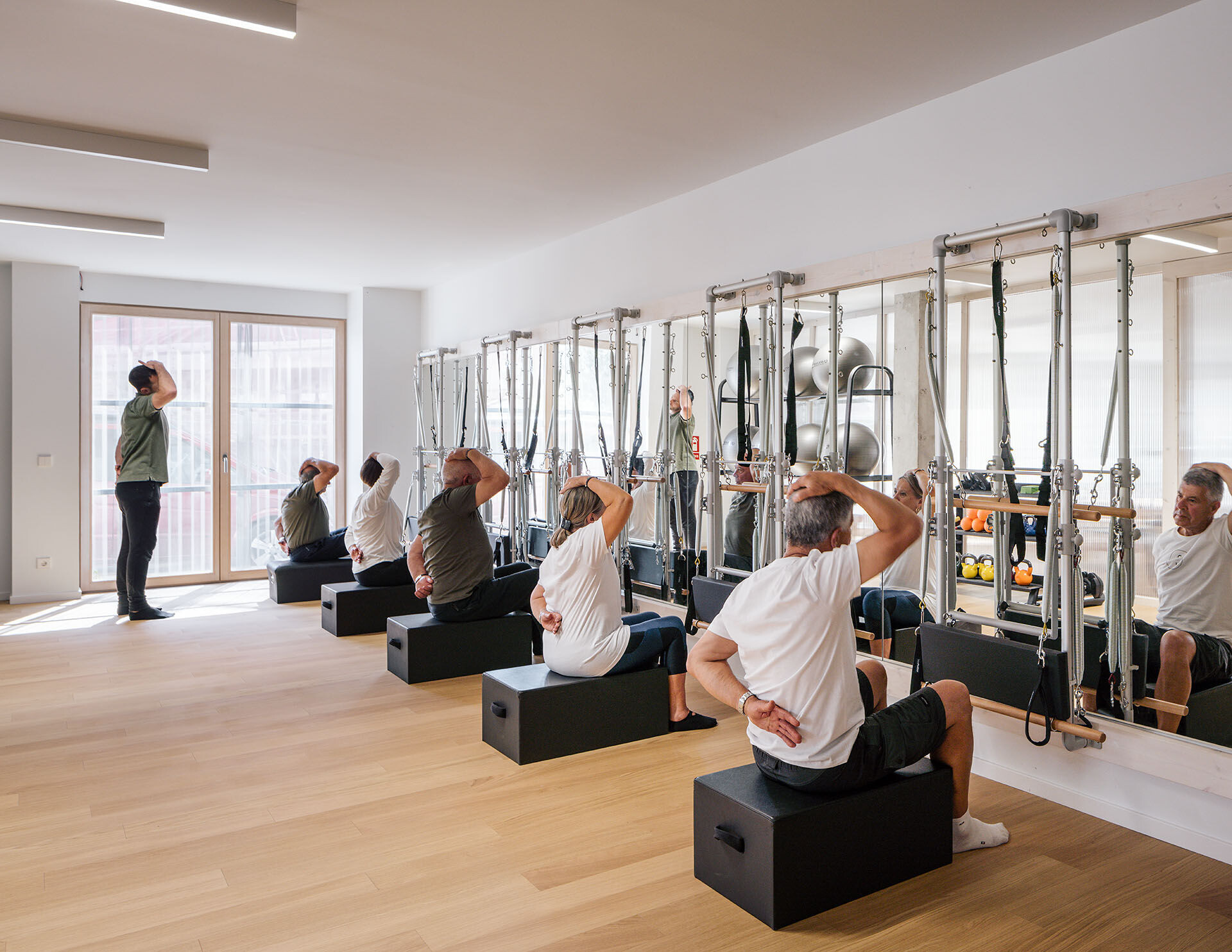
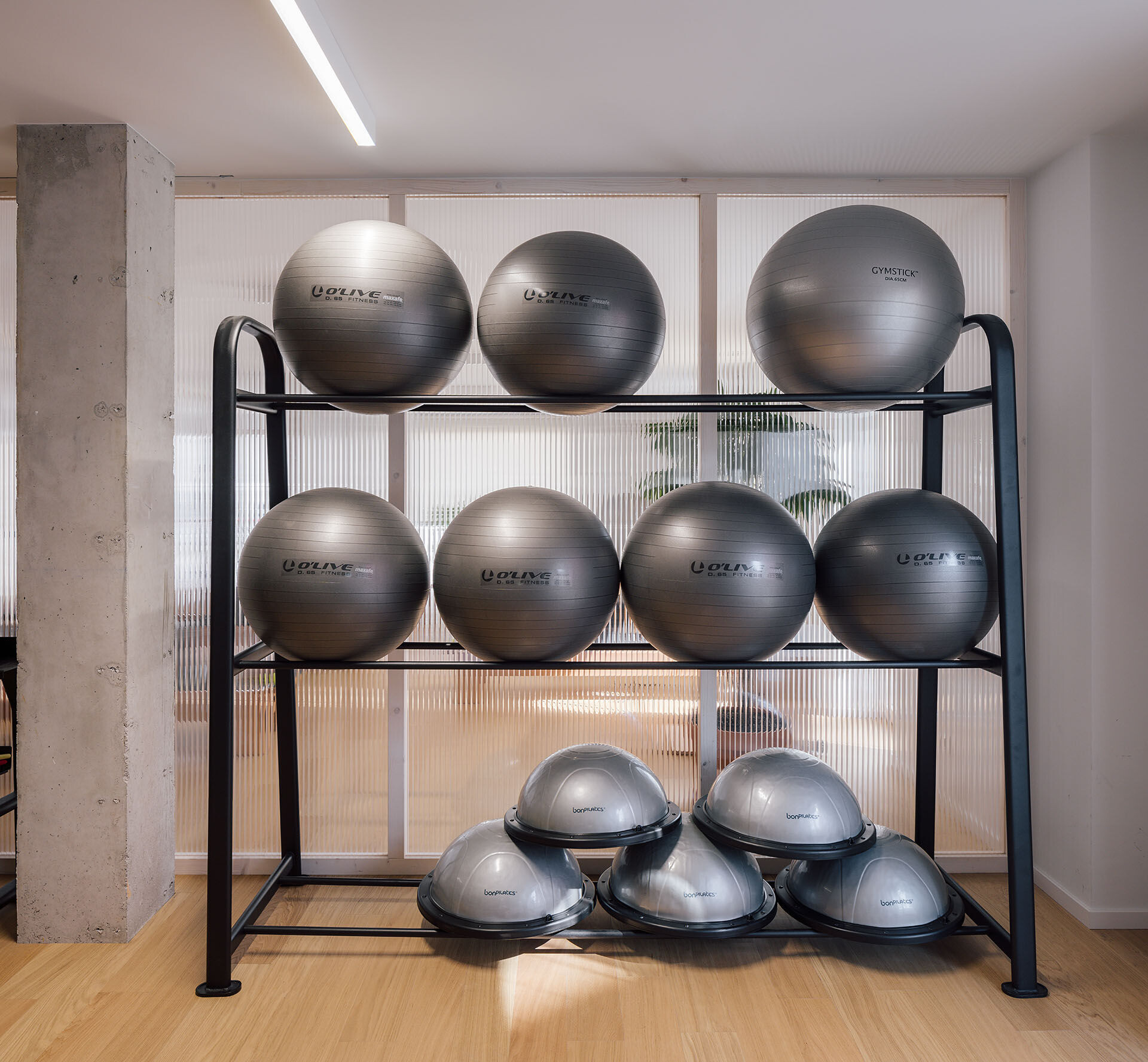
The plan is articulated with a central space connected to the street. It is conceived as a large corridor that can function as a locker room and a waiting area, but it can also be transformed into a classroom with the use of several drawers that also serve as storage. This space is divided into two parts; locker room and entrance hall, which also includes a space dedicated to local art. From here, the reformers room and the towers room are accessed with sliding walls that allow the degree of connection to be changed and the limits of the space blurred. Access is also provided to the corridor that organizes the physiotherapy room, the individual training room and the toilets. The two columns that limit this access, an integrated desk is also hidden by retractable doors, which allow maximum use of the available space.


On a material level, special attention is paid to the floor, made of natural wood, a surface with which there will be continuous contact. The walls are built using wooden frames that house transparent and translucent polycarbonates. These are located to offer varying degrees of privacy as required by the different room functions. This is further enhanced with mirror walls that reflect natural light around the interior, conceal indirect artificial lighting and generate a vibrant experience.

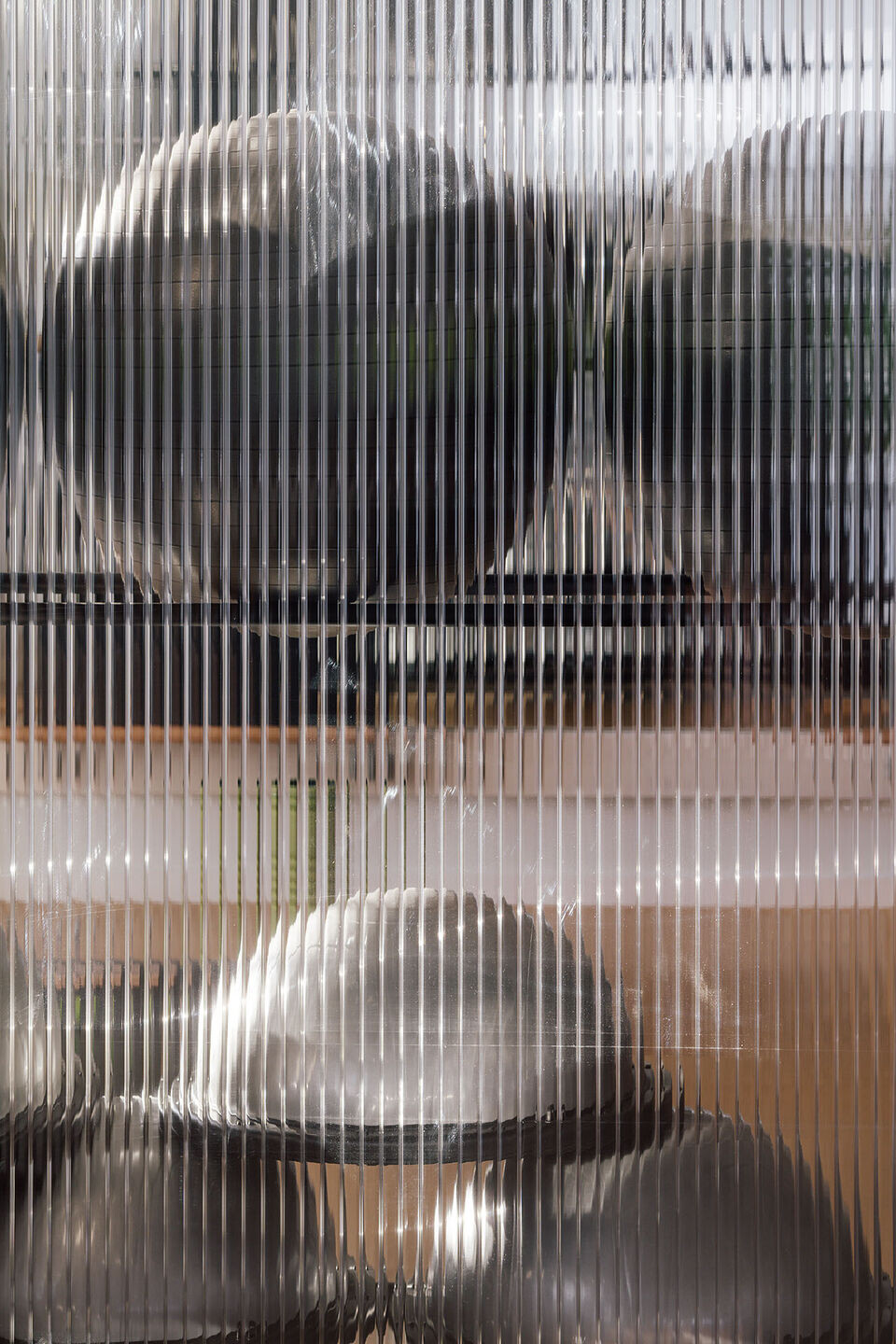
A facade of white corrugated sheet metal is utilized, with micro-perforations at window locations that allow the interior to be hidden from the outside, and views to be maintained from the inside. With this solution, an abstract facade has been created without interfering with the language of the building and without the use of striking graphics.
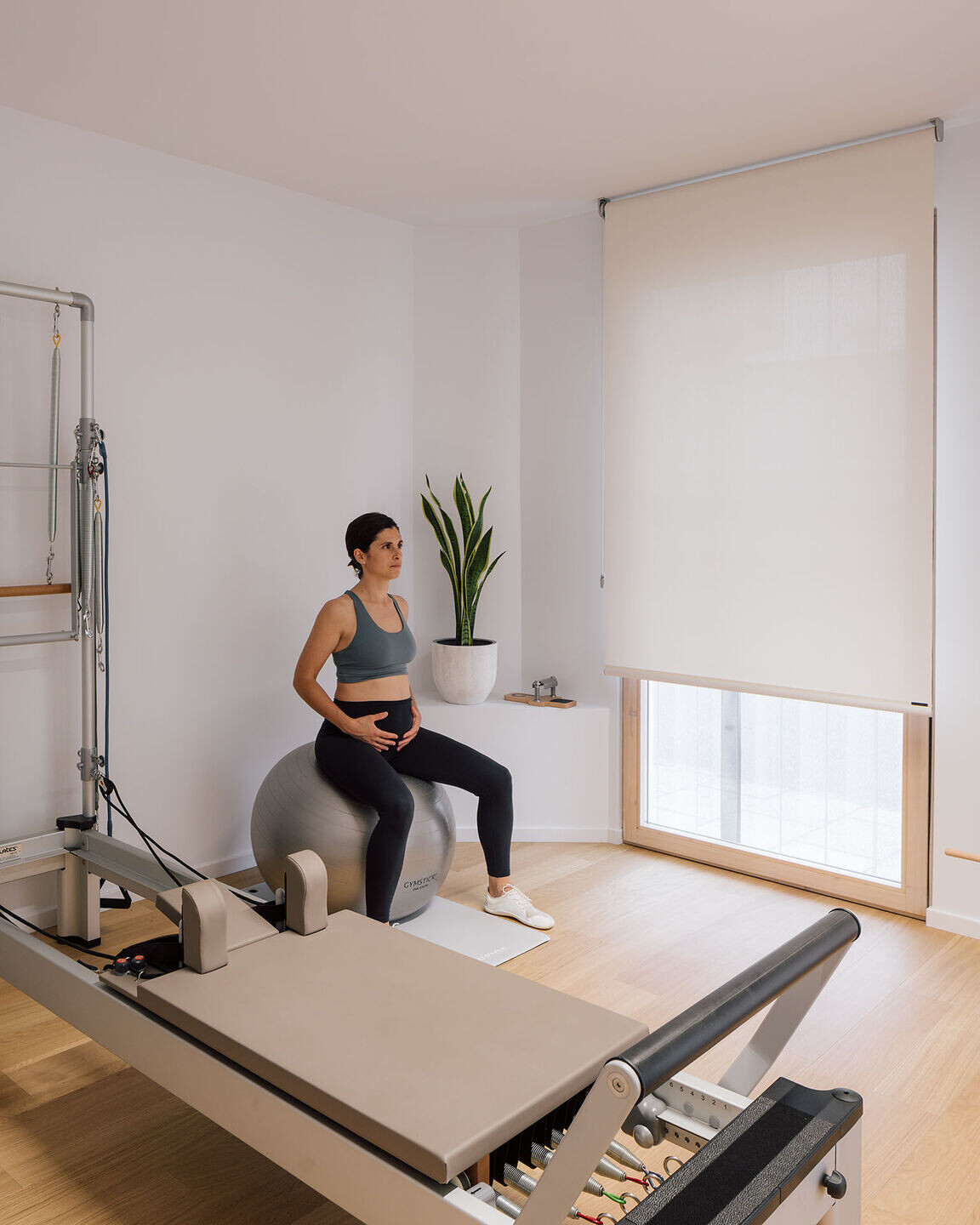

Team:
Architects: Héctor Navarro Architects
Photographers: Imagen Subliminal (Miguel de Guzmán & Rocío Romero)

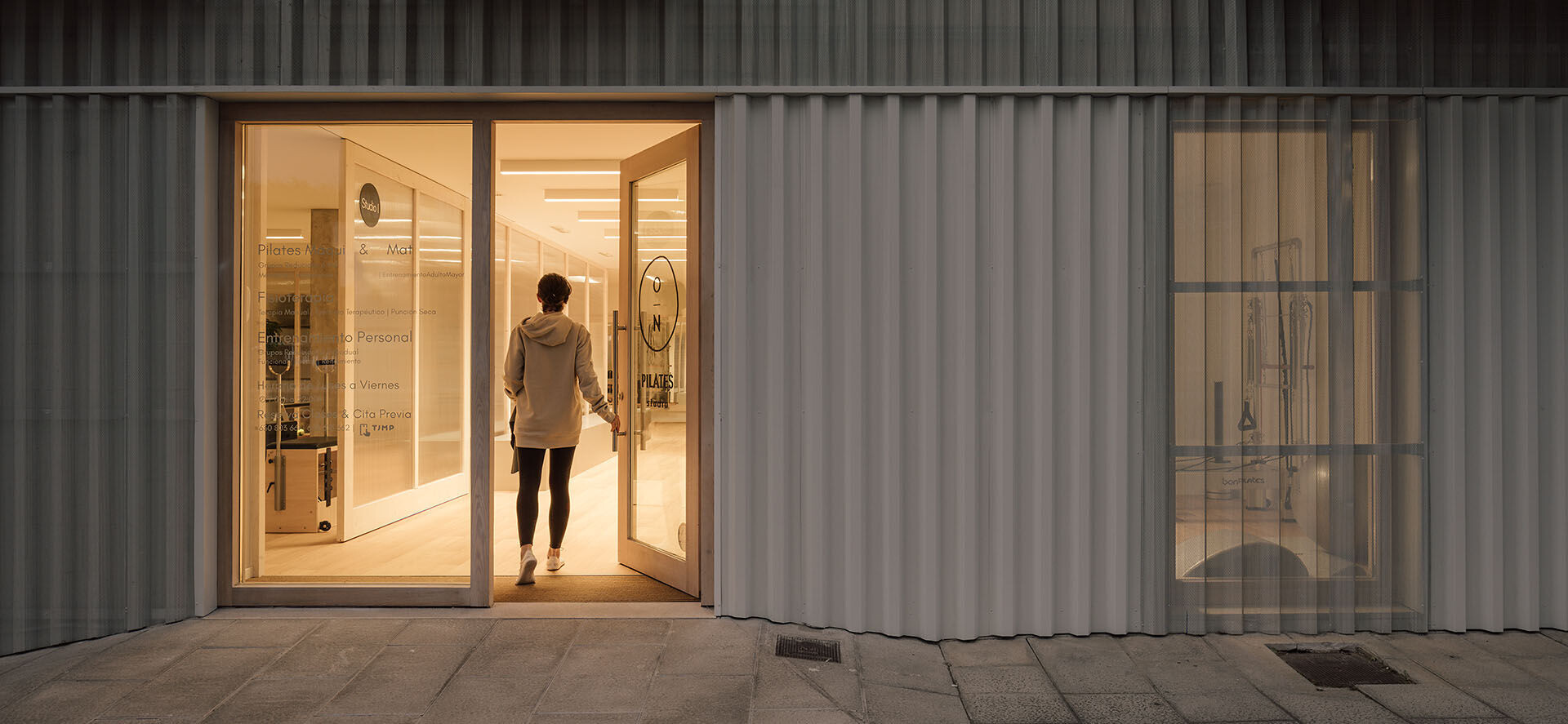
Materials Used:
bonpilates: Reformer madera con torre
ingeperfil
Philips Lighting Signify: Light Strip Plus Philips 20
Samsung: TV LS03B The Frame
step
